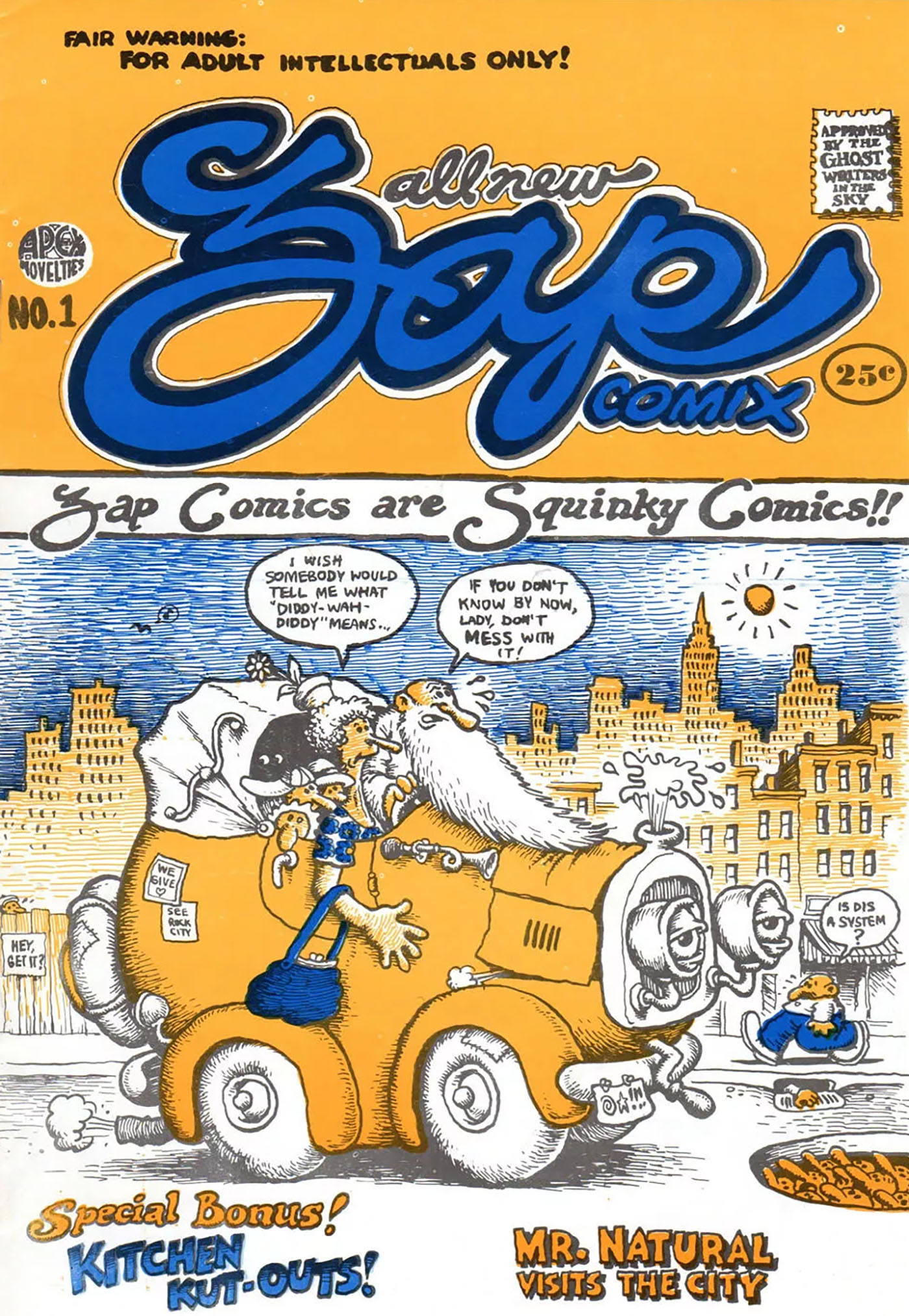I was sixteen years old, at a party in the Claremont neighborhood of Berkeley, where I grew up. I was on a not-too-strong dose of acid. The host, my friend Ted Thornton, asked me if I had ever seen Zap Comix. I said no. I remember his face lighting up with excitement. He knew I was on acid. He pulled the comic book from the bookshelf behind him and handed it to me, smiling.
That was a revelatory acid trip.
From the vast website, comixjoint.com:
Zap Comix #1 is justly lauded for changing the comic-book paradigm, but is it actually any good? When the the author’s wife and friends were hawking this to hippies on Haight Street in 1968, exactly what kind of comic book were they trying to sell?
Zap Comix certainly wasn’t like anything anyone had ever seen before. The front cover art features a cartoonish jalopy packed with a family of six, the wife asking “what diddy-wah-diddy means” and the long-bearded husband quipping, “If you don’t know by now, lady, don’t mess with it!” In fact, Diddy-Wah-Diddy was the title of a 1956 Bo Diddley song (though the term long predates the song) and it refers to “the largest and best known of the Negro mythical places.” Diddy-Wah-Diddy was a mythical, happy Southern town that black people jived about. But it still doesn’t make sense on the cover of a comic book that declares “Zap Comics are Squinky Comics!” What the hell was this comic book trying to pull off? Is dis a system?
Here is a discussion of Crumb’s contribution to lettering and calligraphy.
I still remember when I got to this page:
I think this was the back page:
And here is the man himself.


Leave a Reply